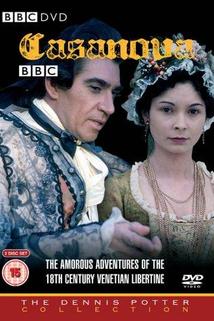Casanova Life
The Italian adventurer Giacomo Jacopo Girolamo Casanova de Seingalt (1725-1798) is best known for his memoirs, which are a most revealing record of 18th-century European society.
The first child of an actor and actress, Casanova was born in Venice. He set out to play the comedy of life with a short role as an ecclesiastic but was expelled from the seminary in 1743. He found refuge in Rome with Cardinal Acquaviva, the first of his many powerful protectors. By 1745 he had returned to Venice, where he practiced magic. Forced to flee prosecution for engaging in the black arts, Casanova drifted from city to city. In Lyons in 1750 he joined the Free Masons, an allegiance that gave him support in the noble, free thinking circles of cosmopolitan Europe. Gambling, profiteering, and amorous activities marked his first stay in Paris (1750-1753). His luck held until 1755, when he was imprisoned in Venice for 'black magic, licentiousness, and atheism.' His spectacular escape is chronicled in the only portion of his memoirs to appear during his lifetime (1788).
The years 1756-1763 brought Casanova his most brilliant successes in a society dedicated to games of love and chance. Voltaire, whom he met briefly, judged him to be a 'mixture of science and imposture,' a suspect combination which nevertheless brought Casanova in contact with Frederick II and Catherine the Great.
Casanova himself divided his life into 'three acts of a comedy.' The second, which he thought of as lasting from 1763 to 1783, was less droll than the first. Protectors were less willing, and as the adventurer's brilliance faded, his charlatanism became more evident. From 1774 to 1782 Casanova added to his repertoire the role of 'secret agent' for the Republic of Venice, but he was less a spy than an informer.

Born to Show and Tell About It. In 1725, a little Giacomo Casanova was born to a Venetian show. Giacomo Casanova was an adventurer, spy and author. He experienced sex at an early age and became passionate about it. His erotic adventures turned his last name to be a synonym of ‘womanizer’. In his early days he aimed to enter priesthood but failed due to his obscene behavior. The Story of My Life is Casanova’s autobiography, spanning his travels, adventures, arrests, duels, kings’ conversations and, of course, his many seductions and conquests.
Many people know Casanova as the great lover he was, but in reality, he was far more than that. He was intellectual genius, writer, poet, musician, lover, and one of the best spies in the history of mankind. That is right, Casanova was a spy for more than 10 years of his life. One thing he wasn’t successful at, though, is. Now 21 years old, Casanova became a violinist. There, he caught the eye of a senator—being in the right place at the right time and saving his life certainly helped—who invited Casanova into his house and became his patron. But Casanova ran into trouble again. He fled Venice, escaped to Parma, fell in love, and had his heart broken.
Again obliged to leave Venice, Casanova began the third act of his comedy penniless and on the road. But in 1785 he gained the protection of the Count of Waldstein, in whose château at Dux (Bohemia) he stayed until his death in 1798. There he wrote his celebrated History of My Life, ending with the events of 1774, after which he had 'only sad things to tell.' Written in sometimes imperfect French, this work moves rapidly and frankly through vast amounts of personal and social detail. Besides tales of the 122 women whose favors he claims to have enjoyed, Casanova offers a chronicle of social extravagance and decline and a vision of Europe as complex and colorful as the bawdy, elegant, naively rational, desperately pretentious, and comic figure of 'Seingalt' himself.
Casanova's writings also include miscellaneous gallant verse, several treatises on mathematics, a three-volume refutation of Amelot de la Houssaye's history of Venetian government (1769), a translation of the Iliad (1775), and a five-volume novel of fantastic adventure to the center of the earth, Icosameron (1788).
Further Reading on Giacomo Jacopo Girolamo Casanova de Seinglat
Long limited to bowdlerized editions derived from a first German translation of the manuscript (acquired by Brockhaus in 1821), Casanova's History of My Life may now be read in a faithful translation by Willard R. Trask (4 vols., 1966-1967). The dean of Casanova scholars, James Rives Childes, wrote the definitive Casanova: A Biography (1961). The richly illustrated book by John Masters, Casanova (1969), provides valuable evocations of his life and times.
Casanova Like Me Lyrics
Additional Biography Sources

Casanova File
Buck, Mitchell S. (Mitchell Starrett), b. 1887., The life of Casanova from 1774 to 1798: a supplement to the Memoirs, Brooklyn: Haskell House, 1977.


Casanova, Giacomo, The life and memoirs of Casanova, New York, N.Y.: Da Capo Press, 1984.
Childs, J. Rives (James Rives), Casanova, a new perspective, New York: Paragon House Publishers, 1988.
Casanova Live Lyrics
Ricci, Seymour de, Jacques Casanova de Seingalt: an address to the Philobiblon Club of Philadelphia, 24 May 1923, Norwood, Pa.: Norwood Editions, 1976.
Casanova Live
Roustang, Francois., The quadrille of gender: Casanova's 'Memoirs,' Stanford, Calif.: Stanford University Press, 1988.